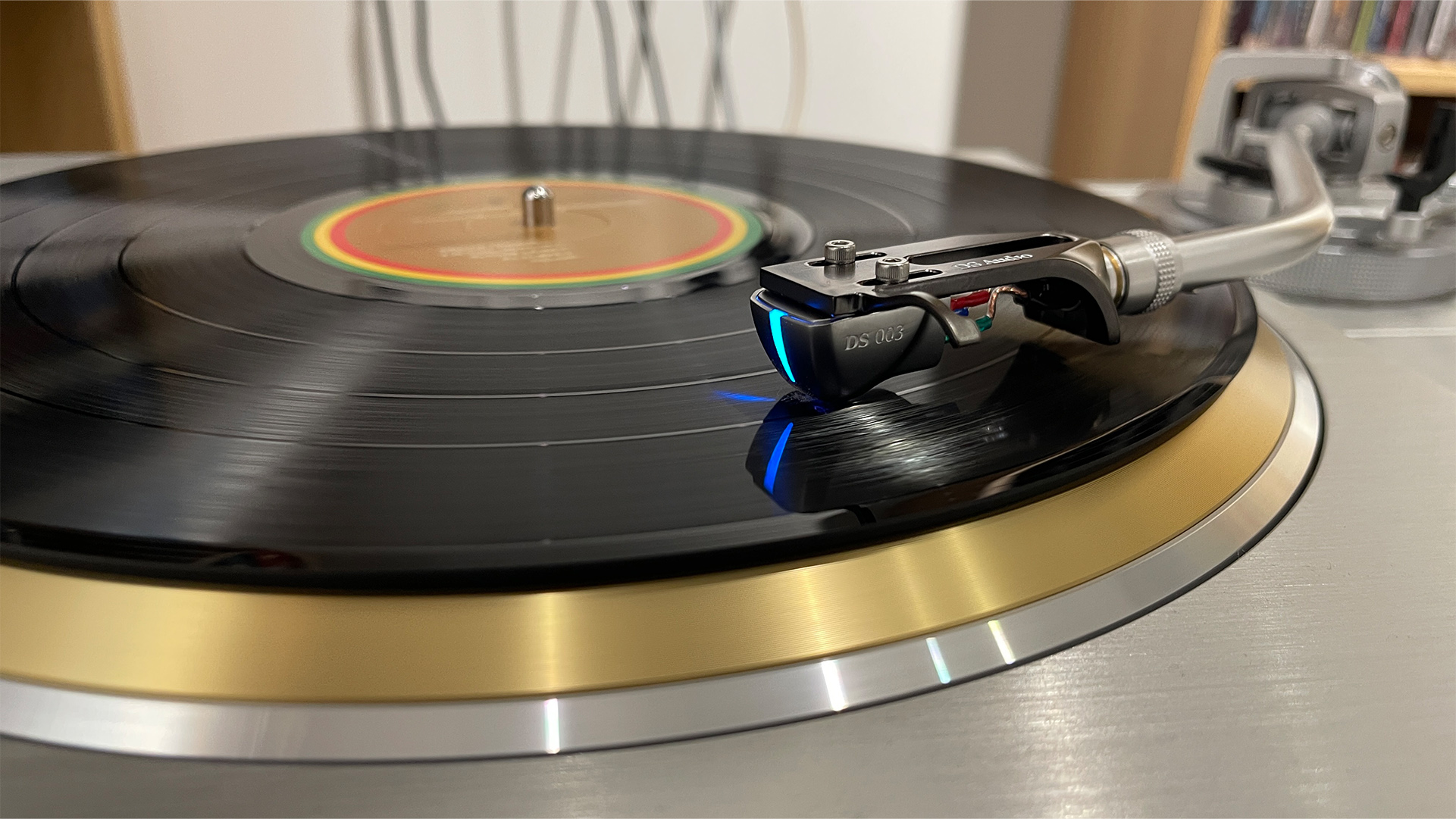
1948 was a big year for fans of Analogue. The long-playing (LP) record that we know and love was launched this year, as were the first moving magnet and moving coil cartridge designs required to play it. To this day, the two cartridge types still dominate to the extent that it would be easy to think that there was no other way of doing that specific job other than by having a small magnet move relative to a coil or vice-versa.
DS Audio would beg to differ. The company isn’t the first to design an optical-type cartridge. There were examples from the likes of Toshiba, Kenwood, Trio and Sharp decades ago, but these failed to catch on for technical reasons (excess heat from the internal bulbs) and commercial (by the late Seventies, the big manufacturers had started to divert resources towards new technology such as CD). But, the idea of an optical cartridge retained much promise.
Build & design
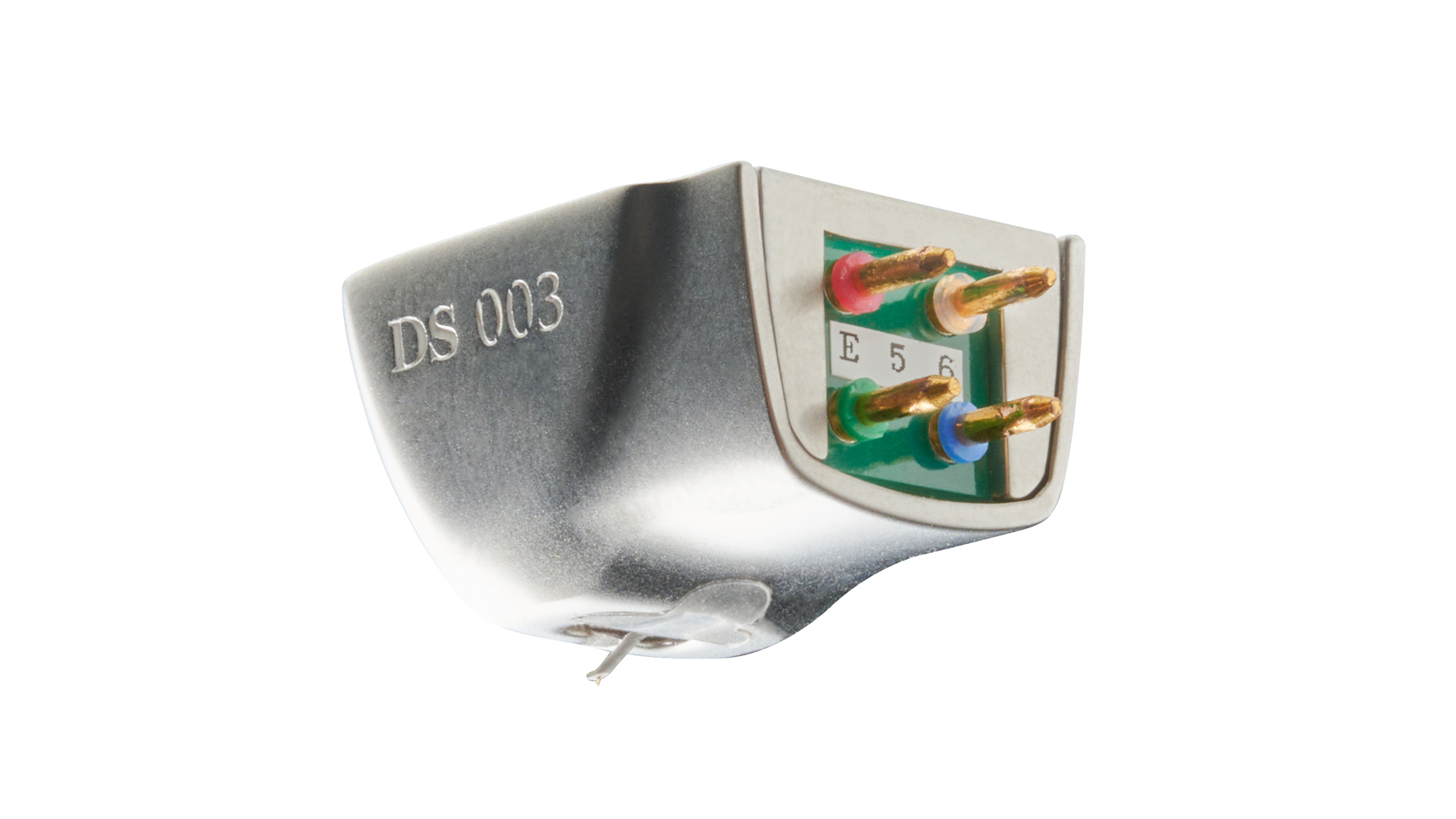
The advent of LEDs is fundamental for DS Audio’s cartridges to work. In the DS 003 optical cartridge, there are two small infrared LED lamps, one for each channel, and a matching pair of light detection photocells. While the DS 003 has a pretty conventional aluminium cantilever (and line contact stylus tip), rather than the cantilever being attached to a magnet (or coil) as it would in a conventional cartridge, here it has a ‘shading plate’ instead. This plate is positioned between the LEDs and the photocells.
As the stylus traces the bumps in the record groove, this shading plate moves in sympathy and the photocells detect any change in brightness from the light received from the partnering LED. That change in light brightness represents the music signal.
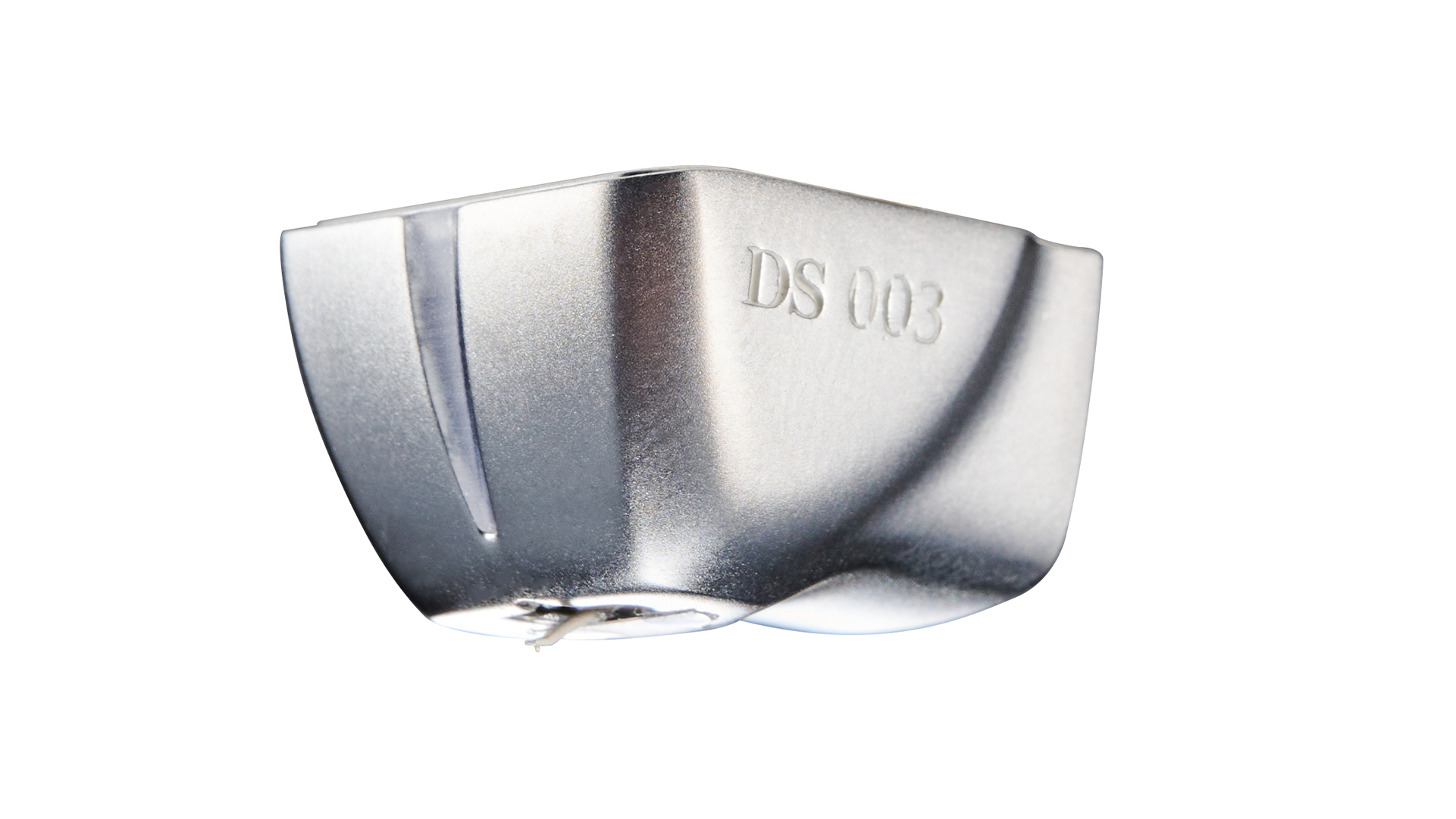
Cartridge type optical
Cartridge nominal tracking weight 2.1g
Cartridge weight 7.7g
Equaliser dimensions (hwd) 9.2 x 33 x 29.5cm
Equaliser weight 5kg
The advantages of such a design are obvious. The mass of the ‘shading plate’, now made of Beryllium rather than the aluminium of the previous generation model, is much lower than a typical coil or magnet, so the stylus tip can track the bumps in the record groove with more agility and accuracy. Also, there are no unwanted internal magnetic effects generated, as there would be in conventional set-ups. The result should be better sound.
There are complications though. Heat is no longer a hurdle, as LEDs produce so much less than the bulbs used in those early designs. But, the cartridge still needs power for those LEDs, and of course, the electrical output from those photocells is very different from that delivered by a conventional cartridge in terms of the relationship between stylus tip movement and electrical output generated.
All this means that the DS 003 can’t be plugged into a conventional phono stage. Think of the DS 003 and the partnering equaliser box as a package, where the box works as a phono stage and power source for the cartridge. That power is fed through the tonearm cable.
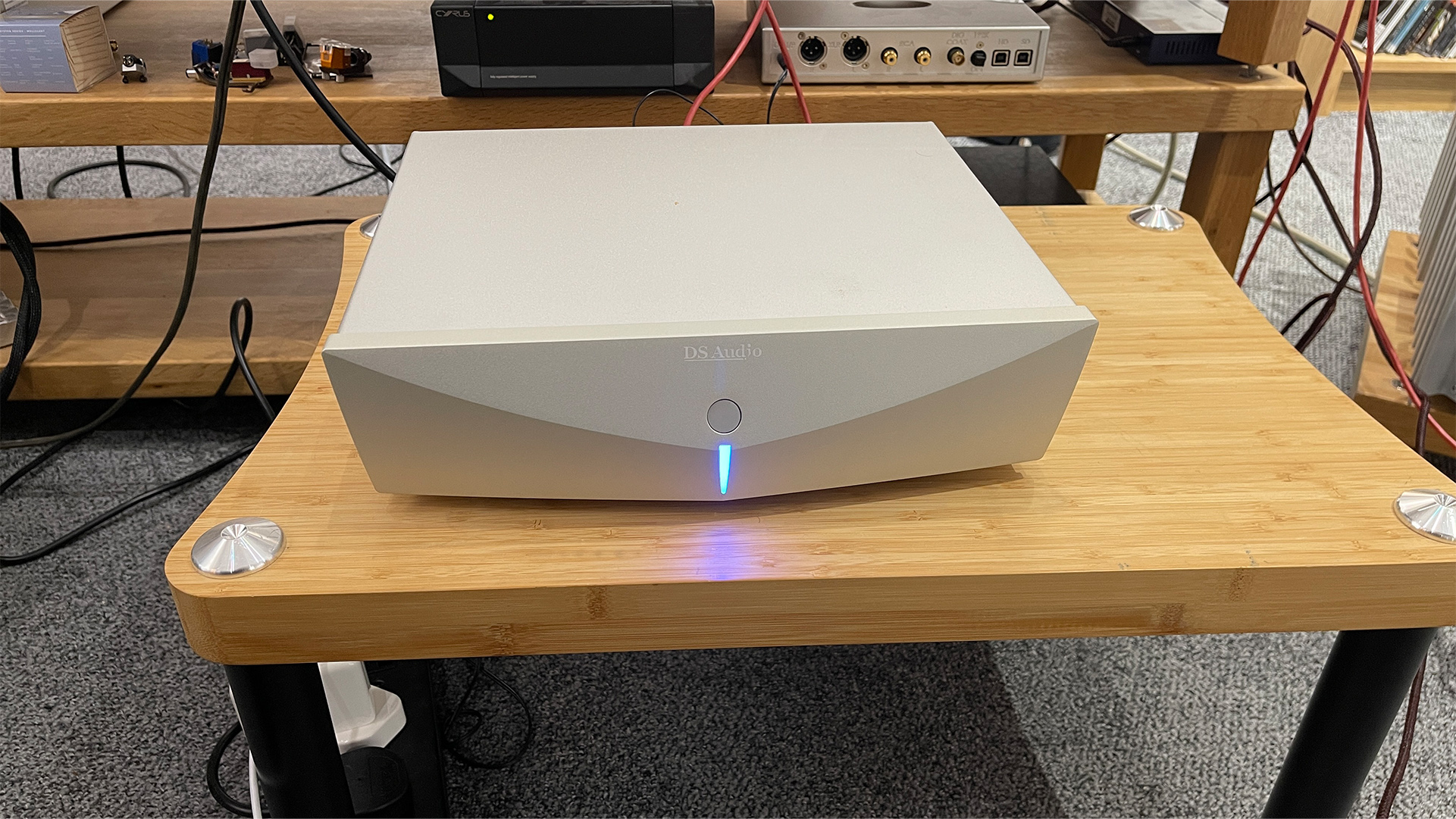
Despite its technological differences, the DS 003 package doesn’t feel any different to use than a conventional set-up. The cartridge is a little bulky but balances out well on our reference Technics SL-1000R’s tonearm and tracks nicely at the recommended 2.1g downforce. Once everything is in place, we also notice that background noise levels are very low. Typical set-ups, even the really quiet ones, usually generate more in the way of hiss and general background hash than this.
The rest of the system is our usual Burmester 088/911 MkIII amplifier and ATC SCM 50 speakers. We also have Wilson Benesch’s A.C.T. 3Zero floorstanders and Kerr Acoustic K300 Mk 3 standmounts on hand as alternatives to the ATCs. Our usual reference cartridge/phono stage combination is Kiseki’s Purpleheart moving coil feeding Cyrus’s Phono Signature/PSX-R2 phono stage, which weighs in around the same ballpark as the DS 003 package price-wise.
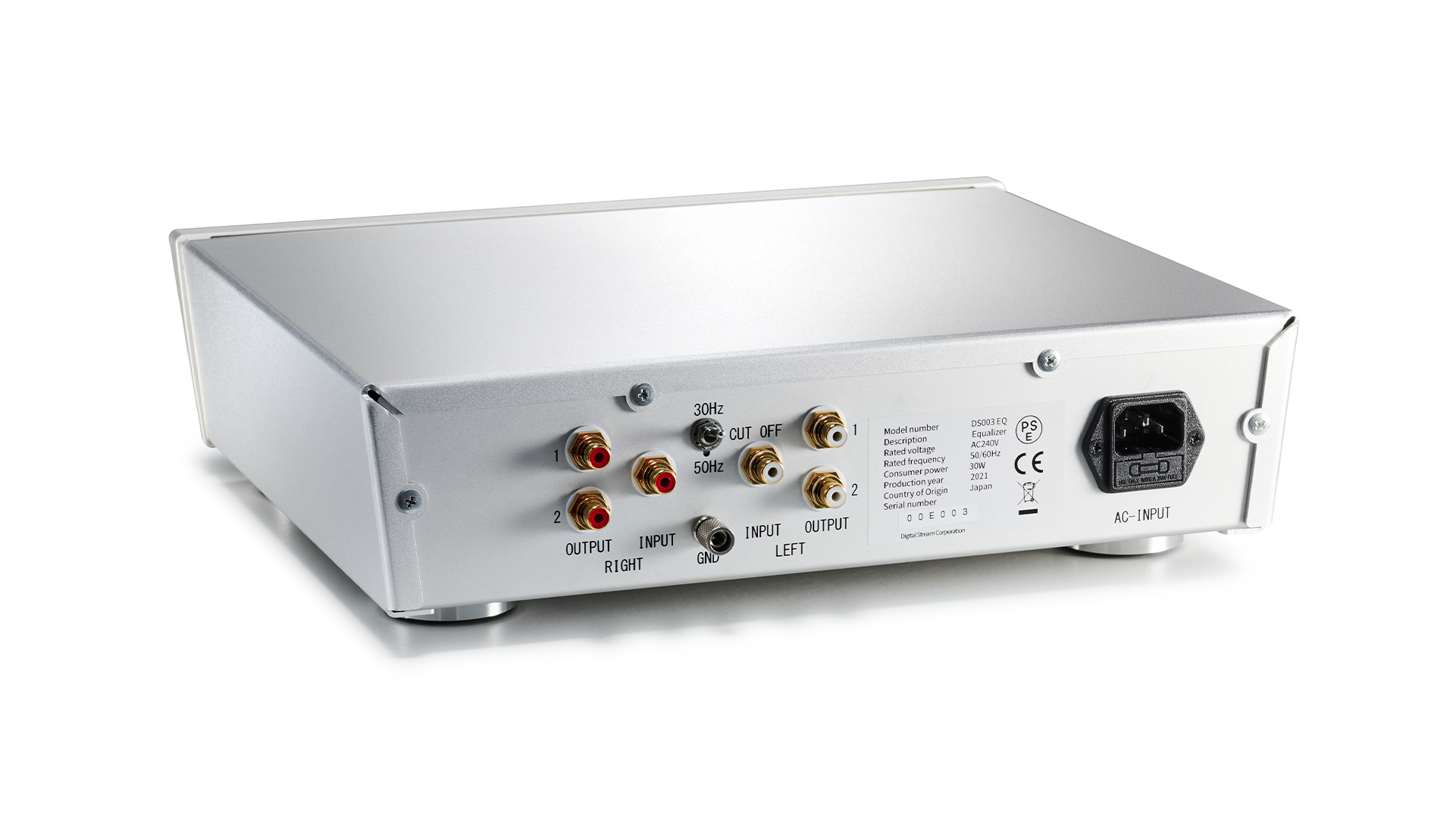
Sound

The two combinations sound surprisingly different. By conventional standards, our Kiseki/Cyrus pairing is crisp, clean and ever so detailed, but it is made to sound a little hazy and congested by the DS Audio combo. There are no two ways about it, when it comes to clarity and precision we haven’t heard anything better anywhere near this price level. The DS Audio DS 003 package defines the leading edges of notes superbly. There isn’t any hardness or undue emphasis, it just sounds bold and natural.
The DS Audio combo is such a great all-rounder. As we listen to Bob Marley’s Concrete Jungle it is hard not to be impressed by the bouncing articulate bassline and the sheer amount of grunt produced in this region. Low notes dig deep and true but pleasingly remain richly textured and wonderfully agile. Punch and attack? There isn’t a problem here either, as we are treated to a performance that sounds bold and muscular without going over the top. There is a strong sense of rhythmic momentum and plenty of cohesion from the lowest frequencies upwards.
Marley’s voice comes through with passion and natural warmth, remaining easy to follow even when the music becomes busy. There isn’t a shortage of refinement either, with the highs coming through with enthusiasm and bite without getting aggressive.
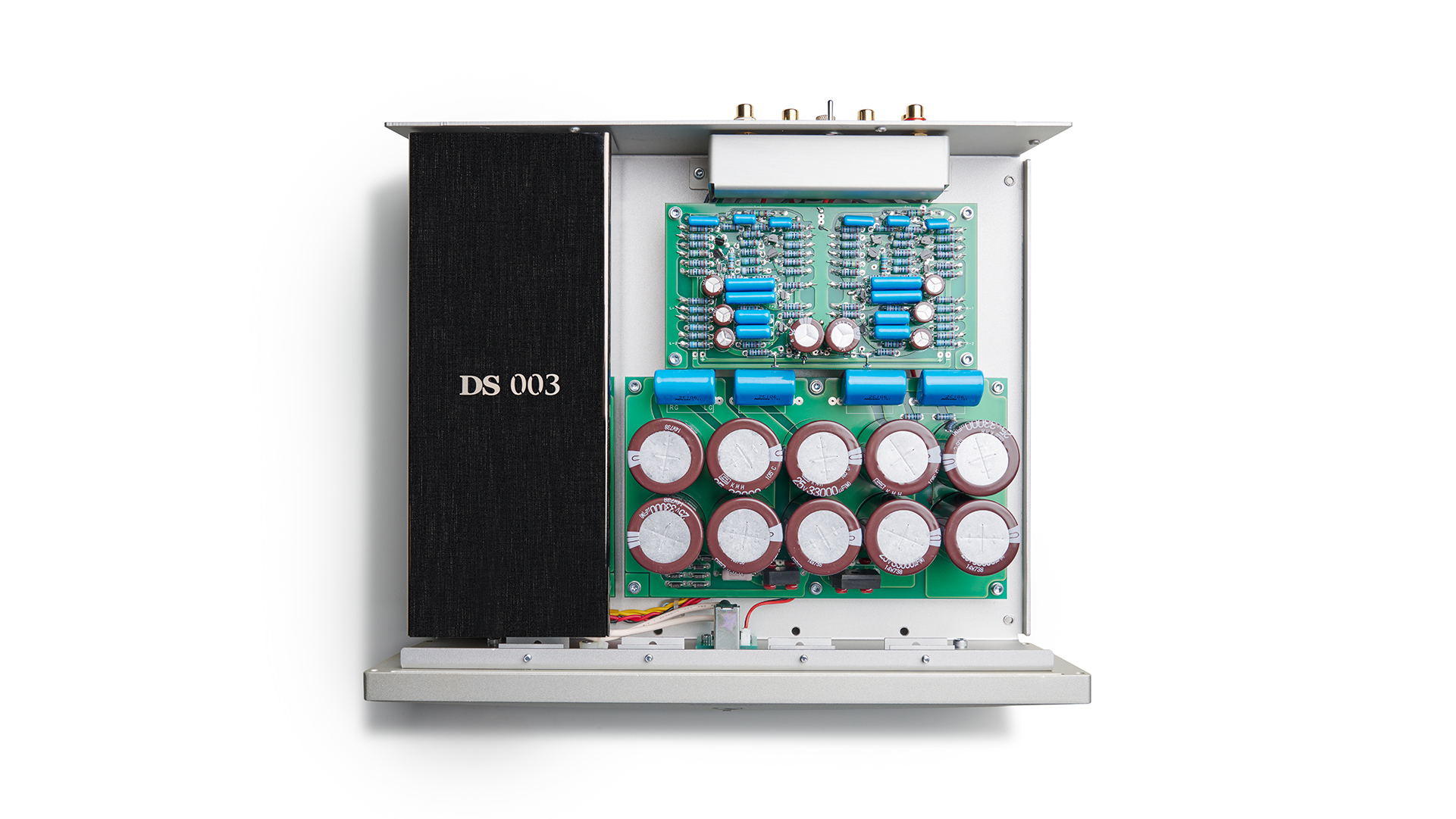
Moving to Beethoven’s Ninth Symphony shows the DS Audio’s balanced tonality, and ability to track a multitude of instrumental strands without confusion. Large-scale dynamics are rendered with enthusiasm and an impressive degree of authority, yet there is enough in the way of finesse to prevent things from feeling ham-fisted. Some listeners may prefer the more comfortable and sweeter presentation of the Kiseki/Cyrus duo, but as we go through record after record in our collection we form a clear preference for DS Audio’s way of doing things. It is more insightful, more expressive and in the end, more fun.
Verdict
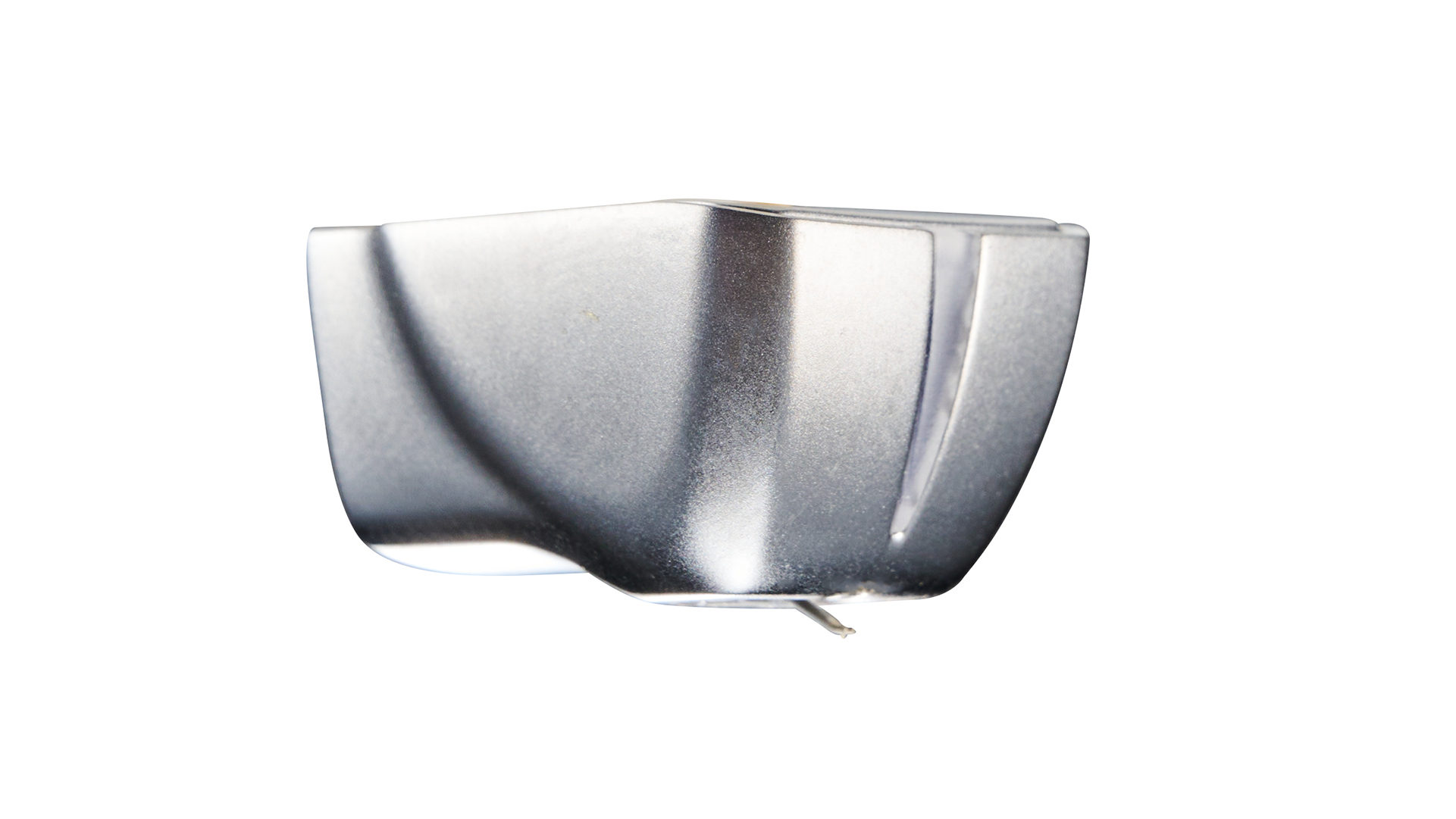
Clearly, this is a huge amount of money to spend on a cartridge/phono stage combination, but in performance terms it is outstanding. The scary thing is that the DS 003 combo sits fairly low in the company’s hierarchy, which makes us wonder just how much better the performance can get. Still, even as it stands, if you have a record-playing system that justifies this kind of expense you owe it to yourself to have a listen to this DS Audio package. It really is hard to beat for the money.
SCORES
- Sound 5
- Build 5
- Compatibility 4
MORE:
Also consider the Kiseki Purpleheart / Cyrus Phono Signature/PSX-R2
Best cartridges: budget and premium options for your turntable







